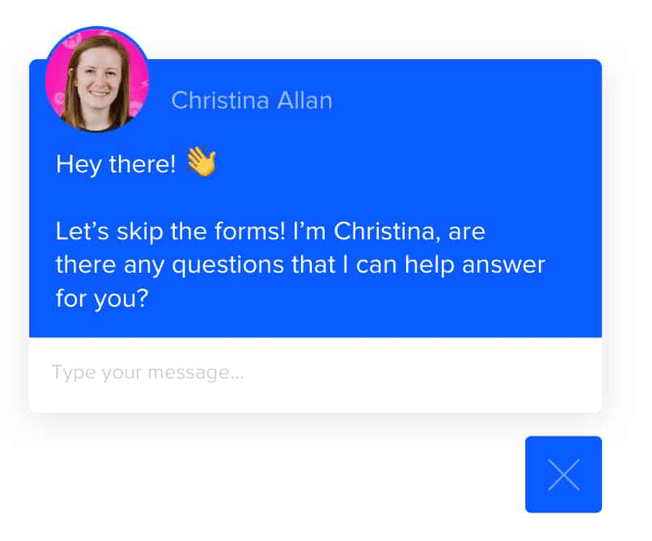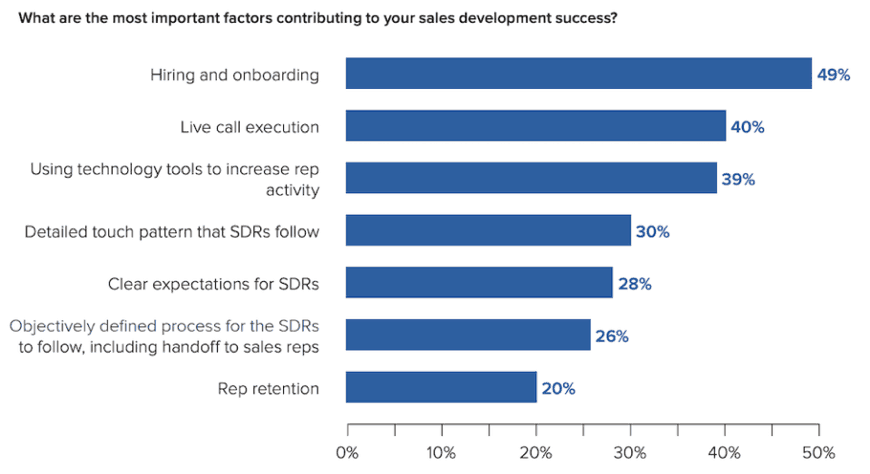
Today’s sales development reps (SDRs) are the unsung heroes of the B2B sales world.
I should know, I work with them every day.
Hey, I’m Scott ?
I’m the SDR manager here at Drift. After selling at Drift for a little over a year, I was lucky enough to inherit a team of four SDRs supporting Drift’s enterprise business unit last January.
Since then, the team has grown into a group of nine creative, hungry, competitive, adaptable and intelligent SDRs who support both our enterprise and mid-market sales teams across three offices and two time zones.
The growth and development of Drift’s SDR team is a testament to the hard work and creativity of everyone in the role. It seems like each day, a member of the team is pioneering a new way to engage with an account and delight our future customers.

The biggest issue facing many sales teams? Aligning SDRs and account executives. Having been an SDR, account executive (AE) and SDR manager I’ve had the privilege of witnessing this through three different lenses:
SDRs are pressured to follow up on all leads. AEs only want to talk to the best people at the best companies. SDRs work so hard to source meetings that it’s natural for them to occasionally get frustrated and try and place blame on AEs when a meeting doesn’t convert to pipeline. And vice versa, AEs are so busy that it’s natural for them to get frustrated when a meeting is put on their calendar that isn’t a great fit.
In the next few sections, I’ll talk about the big picture stuff: the value of a well-trained SDR team to a sales team, why every AE should want an SDR companion and the steps you need to take to align AEs and SDRs to drive sales performance.
How A Well-Trained SDR Team Impacts Sales Velocity
SDRs are important for B2B businesses looking to scale their sales efforts and generate more pipeline. They help bring in highly qualified leads and ensure account executives have the info and room they need close business.
SDRs are also the first personal interaction that buyers have with a business. So: first impressions MATTER. And there’s no bigger blocker to your sales business than an unequipped or poorly trained SDR.

TOPO conducted a State of Sales Development survey to understand the impact of the SDR role on companies. According to their report, the average SDR generates around $415K in pipeline per month (57% of overall pipeline).
So the value of an SDR team can’t be understated. But certain factors can impact just how successful an SDR team is, including:
- Investment and prioritization: Often times organizations will throw SDRs into the fire and assume they’ll get a pipeline lift without actually investing in making the SDR program successful.
- Operations: The days of blindly calling 100 people a day are over – but it’s still a volume game. If your systems and tools aren’t set up appropriately it makes it nearly impossible for an SDR to hit the activity metrics necessary to be successful.
- Onboarding & Training: SDRs are a junior level role in sales organizations. You need to train SDRs on how to work in a sales environment just as much as you need to train them on sales and prospecting.
- Alignment: SDRs sit at the intersection of sales and marketing. If sales and marketing aren’t aligned on expectations you’re in for a world of friction. I’ve heard of SDRs getting reprimanded by marketing for not following up on a specific lead then booking a meeting with that same lead and getting reprimanded by sales for scheduling a bad fit meeting – all on the same day.
A lot of the things on this list align with TOPO’s own findings.

As you can see, 49% of respondents said that hiring and onboarding were the biggest factors driving successful SDR teams.
And I couldn’t agree more. That’s why every Drift SDR goes through a thorough training process to help them be successful ?
How We Train SDRs At Drift
At Drift, we have a two-week training program and a three-month ramp-up time for our SDRs.
In the first two weeks, we train SDRs on our leadership principles, how we work, how to navigate the organization, the life of our buyers, our customers success stories, the product, the pitch, and the tools they will use daily.
Having onboarded almost ten SDRs in the last year, I’ve learned that there are three crucial elements to ramping up SDRs quickly:
- Get them doing the job as soon as possible.
- Set extremely clear expectations.
- Remove all ambiguity.
We tell our SDRs exactly what good looks like and exactly what bad looks like. We have engines for every scenario they may encounter:
- An inbound lead with this title came in? Do this ?
- You’re about to reach out to a cold target account? Do that ?
It’s easy for SDRs to become paralyzed thinking about what comes next, so my goal is to simplify as much as possible. I want them thinking about creative and insightful messaging, not what to do next.
You can train SDRs on tools all you want – and you should absolutely give them the fundamentals – but there is no substitute for going back and forth from Salesforce to Outreach to Linkedin, 75+ times a day.
The sooner SDRs can start prospecting, the sooner they can get their first meetings and start feeling good about themselves. This is a volume and momentum game.
Why Every Account Executive Should Want An SDR
SDR teams are there to support the efforts of account executives. Meaning every account executive should ideally want a good working relationship with their SDRs.
But, it can often be tempting when building a sales team to onboard veteran account executives and hope they scale effectively.
The beauty of a well-trained SDR is that they can help AEs focus on the important task of selling, not researching or prospecting. SDRs help AEs by:
- Building lists with accurate data or for targeted people and accounts
- Fielding outreach and qualifying prospects (outreach can include an average of 50-300 emails and 50-100 calls each day)
- Using MarTech to build accurate lists and help maintain a clean CRM for AEs and the business
There’s no good in just booking meetings if they don’t turn into real customers. Pay attention to how your SDRs introduce buyers to AEs. Consider breaking up AE vs. SDR targeting by company size, industry, and/or revenue. Both parties should end the week with a review. Review why an AE or SDR did/did not book the agreed-upon number of meetings. Focus on what worked and what didn’t.
A good SDR should:
- Help build rapport for the AE by connecting the dots – the relationship should be obvious on the first call.
- Stay curious about deal progress and make sure they know who the key stakeholders are in the unfortunate case that a champion leaves.
- Nurture the account throughout the first call until the SDR and AE agree on how to move the deal forward. It’s all about turning pipeline into revenue.
6 Steps For Aligning Account Executives & SDRs
You understand the value of SDRs to both a company and account executives. So, how can you better align your SDRs with your account executives? ?
- Meet on a weekly basis: Our SDRs meet every Monday with all of their AEs to identify accounts and work on a plan of attack.
- Work on crafting messaging together: As part of their Monday meeting with AEs, our SDRs agree on the appropriate messaging and the right people to reach out to.
- Identify target accounts (account-based selling): Our SDRs own their territory just as much as their AEs do. They should be just as familiar, if not more, with the right accounts, the right events and the right people to reach out to.
- Agree at what point an opportunity gets created: We try and keep this as black and white as possible. The SDR and AE relationship suffers if the two parties aren’t aligned on this definition.
- Determine how much qualification should or needs to happen: This is another crucial area to keep as black and white as possible. At Drift, we’re extremely clear about what good looks like.
- Make sure SDRs and AEs use the same qualification steps/methodology: The only difference in this step is the level of detail. The AE should guide the SDR to uncover one to three key qualification steps. Take a look at a simplified version:
- Does the customer have a pain point?
- Is a solution worth exploring?
- Will the customer agree to take the steps to explore your solution?
Final Thoughts
I hope this advice helps you build a stronger sales team at your company. I’m so proud of the incredible work our SDRs do every day.
AEs and SDRs can be great dynamic duos. Put in the time to make sure those relationships are strong.







